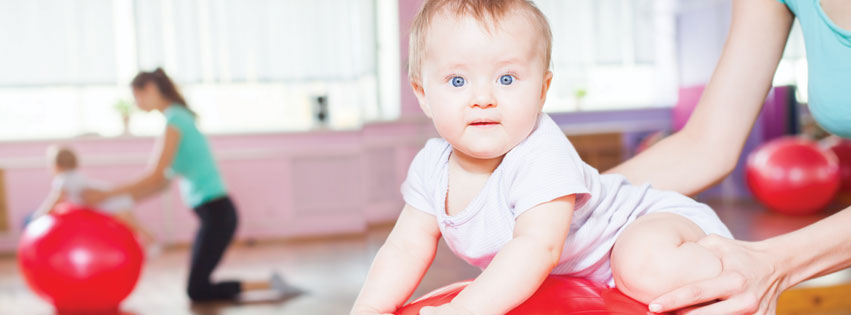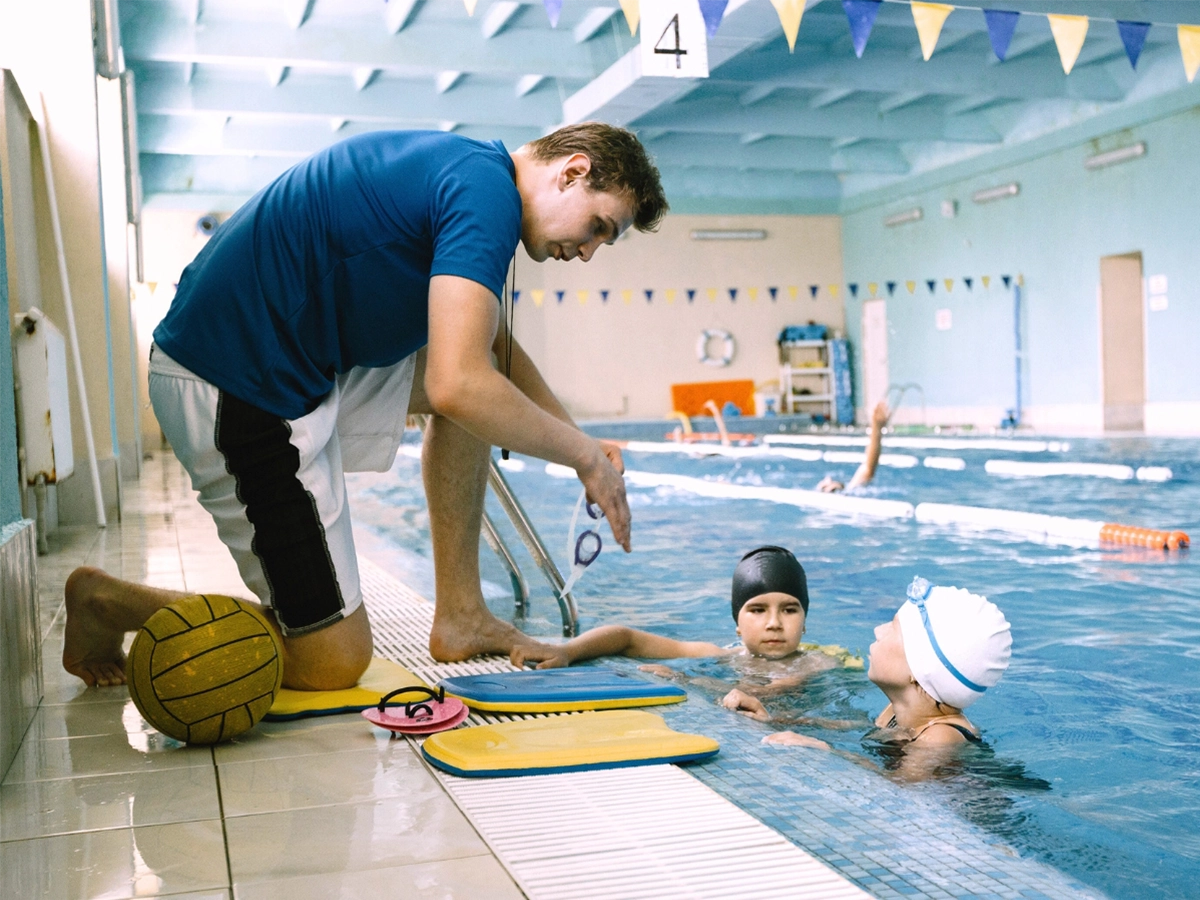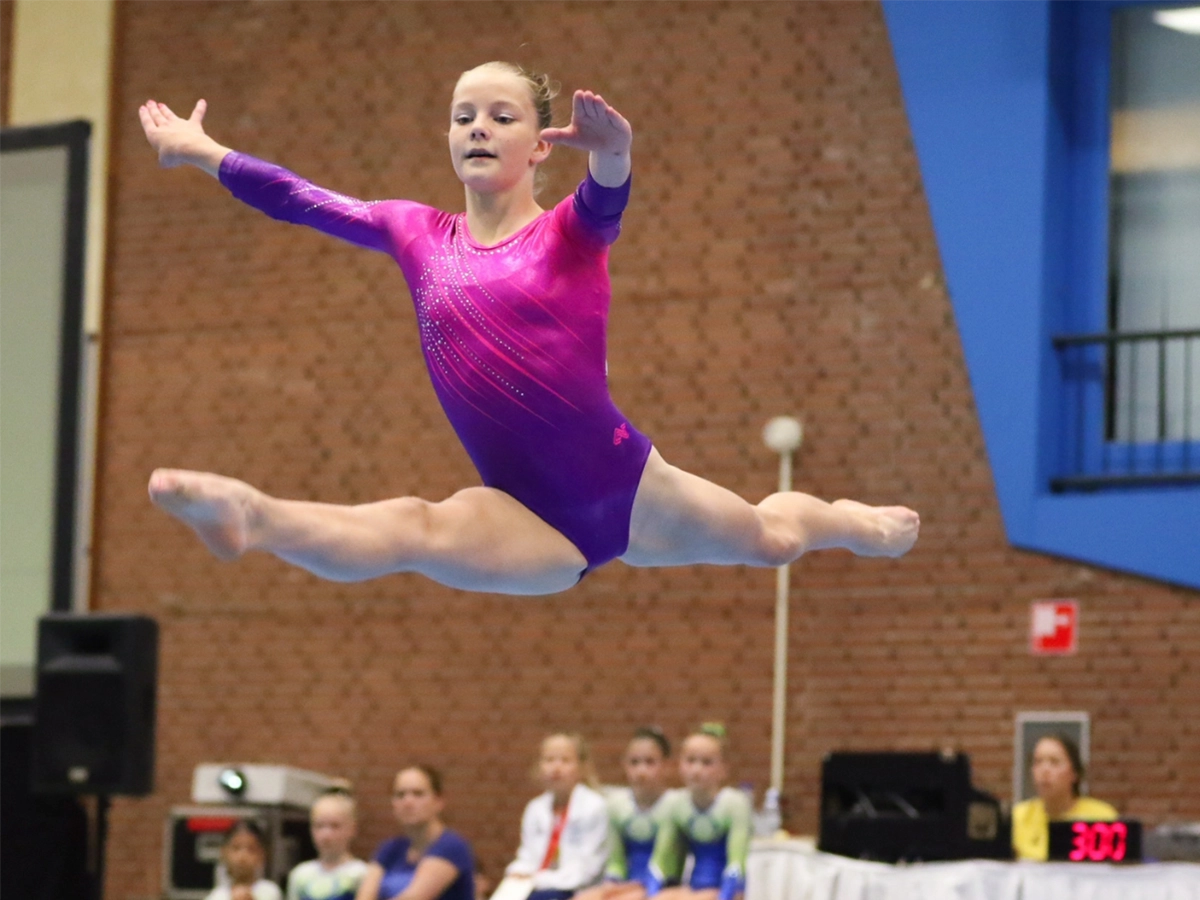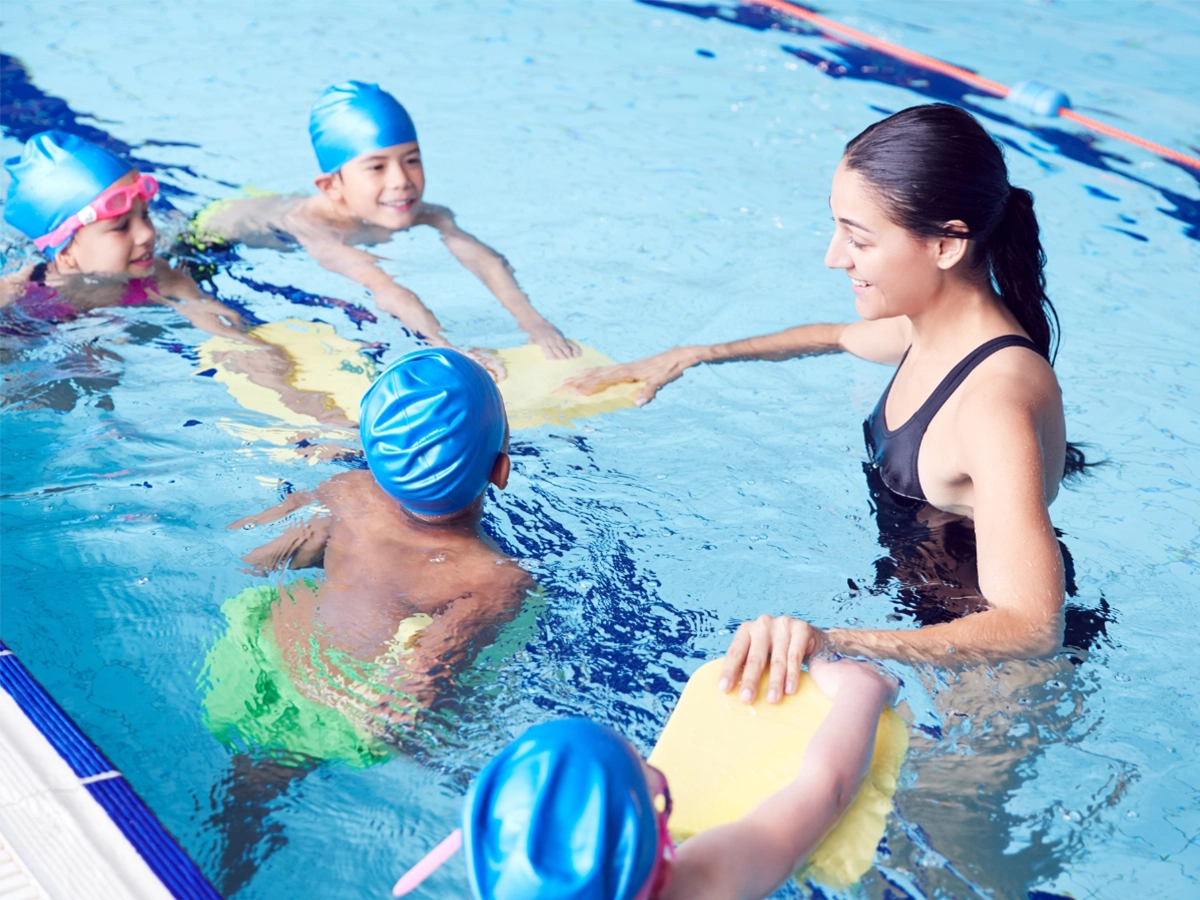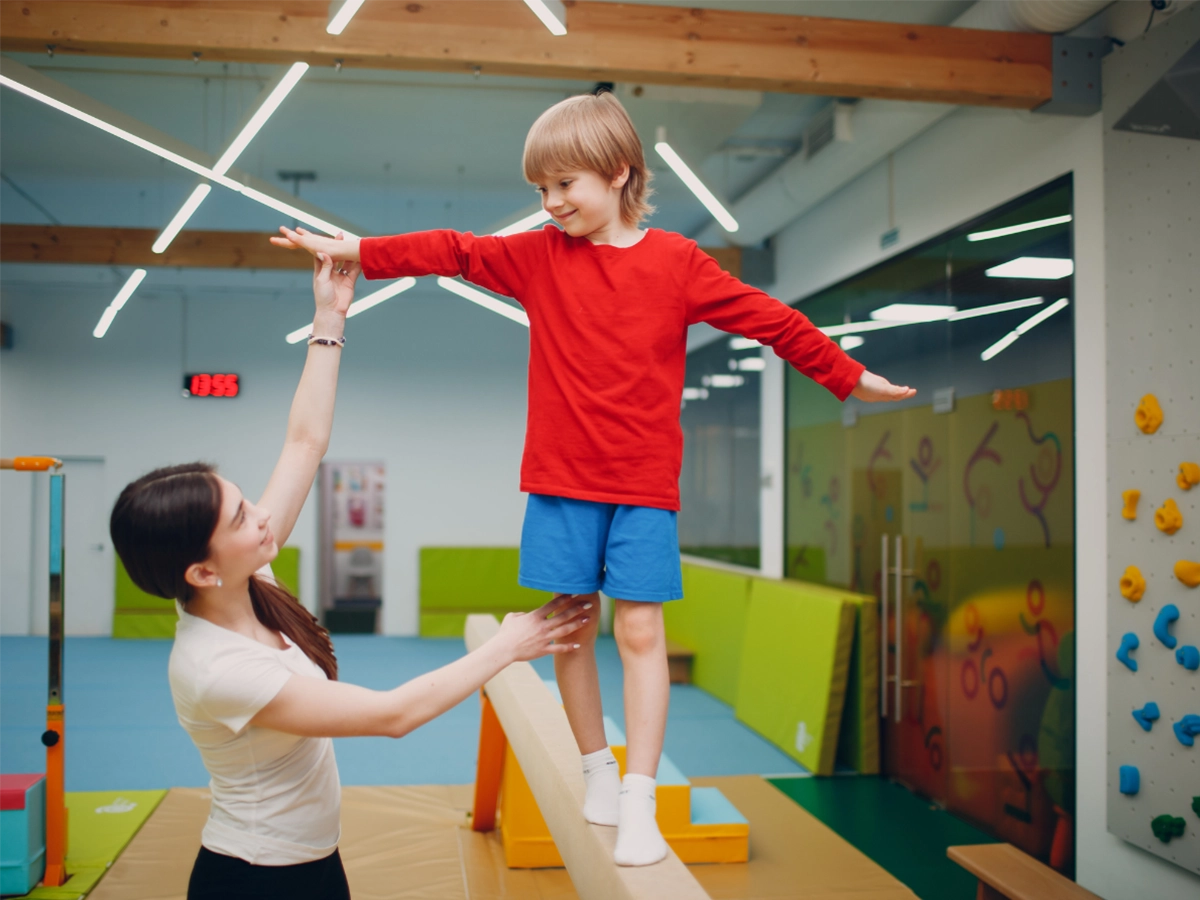Working with kids can be so rewarding. They constantly surprise. Their energy keeps you, your staff, and the gym atmosphere feeling lively. Of course, they’re not simply small adults. Teaching, coaching, wrangling… children also present you with their unique set of challenges.
Yet challenges well worth taking on. That’s why we’re developing this series of articles to help gym owners like you embrace the joy and demands of running a gymnastics center open to the youngest kids through high school. This series touches on both business and coaching matters. If you have or are thinking about opening a gym for kids, these articles are for you. You’ll find helpful tips, some big picture direction, and multiple ideas you can bring to your gym or use to spark some exclusive ideas of your own.
The 10 Things Every Kids Gym Center Owner Should Know
Our series starts with the fundamentals. That’s always the right place to begin. On this list of 10 things every kids’ gym owner should know, you’ll find practical tips on how to manage classes and develop lesson plans. You’ll also find out what types of formal preparation and policies are needed to coach and — where needed — to discipline kids. The tips also cover ways to keep kids engaged, as well as how to ensure that gymnastic classes provide kids opportunities to grow in so many more ways than only learning just gymnastic skills.
Last, this article wraps up with one bonus tip that’s critical to the successful execution of not just these tips, but every aspect of your gym’s mission to teach children. It’s an action only the gym owner can take and one that takes commitment and vigilance.
How Young is Too Young for Toddlers to Begin Gymnastics?
 Spoiler alert: They’re never too young (for the most part). That’s the short answer but check out the full article for a more in-depth look at this question. The article looks into:
Spoiler alert: They’re never too young (for the most part). That’s the short answer but check out the full article for a more in-depth look at this question. The article looks into:
- What USA Gymnastics identifies as the ideal age range for developing the critical foundational skills to excel in gymnastics at a later age, and why specially designed classes for toddlers even younger than this age are beneficial regardless of whether that toddler continues with gymnastics later in life.
- The general skills and particular moves to focus on in these earliest classes.
- Why you shouldn’t get caught up on the “gymnastics” label for classes designed for the youngest kids and their parents. In fact, not using the “gymnastics” label can broaden the marketing appeal for these classes to bring in parents who hadn’t thought about gymnastics when looking for activities for their children!
Kids really aren’t too young for movement classes. Providing them does raise some issues that as the gym owner, you’ll need to address to offer them in a safe, fun environment.
Everything You Need to Know About Offering Toddler Tumbling Classes
The toddler tumbling class — the entry point to your gym for so many future gymnasts. In this article, we break down:
- How to categorize toddlers at different developmental stages to ensure that each toddler is in the right class.
- What the main skills goals are for different levels of toddler classes, both physical and social skills.
- How to get into the toddler mindset so you can design toddler classes that elicit smiles and giggles, as well as hold their attention.
- What you need to know about the care and feeding of the toddlers’ parents, whether they’re active participants with their child in the class or just observing from the gallery.
This article also explores, in detail, exactly why toddler classes are an absolute goldmine for your gym and its most critical revenue pipeline for sustainable success. You’ll understand precisely how and why a well-developed program of toddler classes can both maximize individual student revenue as well as raise the ceiling on gym revenue overall.
10 Fun Kid Activities Your Children’s Gym Should Offer
The focus of this article is to make sure you and your staff have techniques to make sure kids always look forward to coming to the gym. Younger kids may have a hard time staying focused or get frustrated if they feel like they aren’t making progress. Older kids, especially those in competitive gymnastics, will all have their moments when they wilt a bit under the heavy schedule.
Whatever the age and whatever the circumstances – your gym needs to always be a fun space.
We break this article into two main sections:
- The first section details seven fun games you and your staff can use whenever a class feels like it needs a boost of energy. We also explain ways you can modify each game so it’s suitable for different age groups. The games are flexible, reinforce certain skills, and most importantly – raise the fun and energy level.
- The second section of this article provides three concrete examples of organized activities focused on fun, that you can offer and bill. You can make these regularly scheduled one-off sessions, instead of a series of sessions. Alternatively, you can roll out different versions of these ideas as special events. In either case, offering fun activity classes with a low commitment makes a valuable entry point to your gym for parents who want to get to know you a bit before committing to a full class.
Don’t underestimate that monetary value of fun. Parents who have to fight every time to get their kids to come to gymnastics class aren’t going to stick with it for very long.
How Your Kids Gym Can Inspire Boys and Girls to Love Gymnastics
 Fun is an important part of gymnastics, but fun on its own isn’t enough. Lots of activities are fun. One of the most worthwhile aspects of teaching children is watching them become as passionate about gymnastics as you are. Inspiring that kind of love takes deliberate planning.
Fun is an important part of gymnastics, but fun on its own isn’t enough. Lots of activities are fun. One of the most worthwhile aspects of teaching children is watching them become as passionate about gymnastics as you are. Inspiring that kind of love takes deliberate planning.
In this article, we share practical approaches you can use to inspire a love for gymnastics and how to use gymnastics to inspire the kids. The suggestions cover everything from how you:
- Decorate your facilities
- Develop an encouraging coaching and training style
- Support parents to help them support their children
- Involve students in their own development
This article also provides practical ideas on how to create gymnastics-centered social activities to foster team bonding, including activities that can embrace both the students and their families to create a broad-based, mutually supportive community.
We close off this article focusing on strategies you can use to keep your staff and yourself inspired. Low-energy staff won’t inspire anyone. Neither will a low-energy gym owner. Putting together a plan to keep yourself and staff energized and passionate about gymnastics is crucial to motivating that same commitment in students.
How to Manage a Co-Ed Gymnastics Class for Kids
The previous post begs the question: should you hold co-ed gymnastics classes? This is the article that answers that question. We break down some best practices for co-ed, or not offering co-ed classes, by age group. We share some of the science we’ve found on the issue and explore why some of the conventional thinking about the challenges of co-ed physical education may not apply to gymnastics.
The article also includes guidance on deciding what classes to offer as co-ed and how to run them in ways that create positive experiences for everyone. It concludes by exploring why it’s important to use co-ed class best practices from even the youngest classes to set students up for success in the future.
How to Craft Toddler Classes Parents Want to Attend
To attract enrollees to your preschool gymnastic classes, it’s all about marketing to the parents. You’re certainly marketing to parents for your other classes. However, you can (and should) also be marketing to the kids who can influence their parents – or at least bug them enough until they sign them up. For toddler classes – it’s all about sparking the parents.
In this article, we explore two distinct phases where your gym has to appeal to the parents:
- Pre-enrollment, where you need to persuade them that:
- Lessons for toddlers and baby tumbling classes are valuable for both their child and parent, and
- Your gym is the best place where their sweet precious will be safe and develop foundational body awareness and motor skills, giggling all the way
- During the classes themselves — the parents need to have as a good a time during these classes as their preschoolers do
The process starts with how you group these classes, the names you choose (you don’t have to go with “Mommy & Me”) and how you communicate to parents what their role in these classes are. It continues on to how you smoothly transition parents to signing up for the next class and make them feel like members of your gym’s community.
Creating a Safe, Fun Environment for Your Youngest Students
You want everyone to stay safe in your gym — no question! However, it takes some special attention to create a safe and fun environment for babies and toddlers to enjoy.
Ideally, your gym separates the space designed for toddler and babies from where your older students train. This limits the potential of a child toddling off where they don’t belong. Even if all your students do work in one large space, the toddler and baby space should be clearly defined. In this article, we go into different ways to design a layout that’s playful, colorful, and safe. We also step through a detailed list of equipment, both gymnastics and exercise toys, to include.
Another important part of safety is how to spot kids. For many of these classes, it’s the parents themselves who’ll be holding or spotting their kids. This article provides some tips on how to help parents keep their children safe during class, from specific tips you can share to how to train parents to spot safely.
The final aspect of toddler gym safety in this article covers how to keep everyone interacting in safe, healthy ways with each other. With all the parents and kids involved in a single class, there’s a lot of opportunity for friction. This could range from a toddler who’s a bit physically aggressive to a parent who doesn’t keep the line moving.
Creating Play Stations That Engage and Teach
Having a list of skills to teach for different stages of development is the jumping off point for devising a baby or toddler class curriculum. While certain portions of the class are done as a group, parents and their kids are rotating among stations for much of the class. The teacher and assistant are watching and helping. However, each station has to be devised so parent and child can use them properly to develop the skills intended while having fun at the same time.
In this post, we break down the relevant developmental milestones for different young ages, social, cognitive, and physical. You can’t design an effective station if you don’t identify what skills it’s intended to develop! From there, the post links specific activities to specific skills.
You’ll also get a checklist of the seemingly “minor” attributes each station must have to provide a joyful experience for parent and child.
Finally, you’ll learn some tips on how you and your staff can brainstorm some creative circuit and station ideas that will make your gym stand out.
6 Other Fee-Based Events (Besides Classes) Your Gym Can Run for Preschoolers
 While class tuition fees are your bread and butter, you also have multiple revenue opportunities when you offer fee-based special events. In this post, we outline how to design, price, and promote six different fee-based events geared towards babies and toddlers that can become serious additional streams of revenue for your gym.
While class tuition fees are your bread and butter, you also have multiple revenue opportunities when you offer fee-based special events. In this post, we outline how to design, price, and promote six different fee-based events geared towards babies and toddlers that can become serious additional streams of revenue for your gym.
The six special event activities covered are:
- Open play time just for kids 5 years and younger.
- Storytime where the kids get to play act in ways they don’t allow at the library!
- Family night out where your gym provides a reasonably-priced evening of fun for parents with young kids without having to go to noisy, messy restaurant arcades.
- Tumbling in the park – have some fun outside the gym.
- Rent your toddler space for private events, like birthday parties.
- Host one-off seminars that teach parents how to provide safe, gymnastics activities back home that continue the kids’ learning and development
We address each event separately, with tips and best practices for offering a great, profitable event. As you read through this post, you’ll hopefully get inspired to come up with some new event ideas of your own. You can use the suggestions provided here as guidelines for designing and marketing your unique event ideas.
Running a Successful Parent Orientation Session
A thorough parent orientation is particularly essential for toddler and baby classes since the parents are so involved in the class itself. It needs to:
- Cover business (fees and waiver) issues
- Teach gym and spotting safety
- Set expectations for how the class is run and what the parent’s role is
- Review gym policies regarding class behavior and discipline
Your gym’s orientation can come off as a tedious, boring task. Or… you can simplify the process and deliver an in-person orientation session that gets everyone excited.
The truth is, you don’t need to conduct the entire orientation one way. We’ll detail which parts are best delivered electronically to each individual family prior to in the in-person orientation. (Let’s face it, the fees and waiver part is always going to be a bit boring. No need to make everyone slog through it together.)
Also, not all the orientation content needs to be about reading documents. We’ll share tools that make it easy to develop multimedia content that can deliver some orientation information. Create short videos that parents can watch on demand, so they come to orientation with questions and are ready to test things out for themselves.
Approaching parent orientation in a more modular way lets you run an in-person orientation session that’s more interactive and social — jumping off a new class to a great start!
Coaching Gymnastics Parents
Kids aren’t the only ones who need coaching. Parents, especially in these parent participation classes, will always need coaching too. You’ve taken care of some of that coaching as part of a comprehensive orientation process. Orientation covers situation normal. You also need to prepare for the outlier situations. There are two main types of outlier situations that parents need to get coached on how to handle during a lesson:
- Situations created from circumstance – a child needs correction to learn a skill or discipline for bad behavior
- Parental behavior itself is the outlier – an aggressively critical parent, the passive parent, the parent who doesn’t play well with others
These are all issues you and your staff will experience. You need to develop your gym’s plans on how to coach parents to be supportive of all kids (not just theirs) during class and how to coach parents out of bad behavior they may be exhibiting.
You’ll have shared behavior and discipline guidelines during orientation. However, having a constructive conversation with a parent when guidelines aren’t being followed is a more challenging task. This article outlines tactics to use (and not to use) when someone has to coach parents back to being a positive presence in class.
The Kids Are Alright – They Just Need Some Special Attention
Kids are the most interesting combination of fragility and resiliency. Everything your gym does to coach, train, and mentor kids has to be designed exclusively with their needs in mind. Since the kids themselves vary so greatly, even from one year to the next, each developmental stage has its own set of requirements and possibilities.
Running successful kids’ classes at every developmental stage is key to sustaining your gymnastics center’s financial health. Use this series as your jumping off point to ensure you’re addressing all the issues, from legal to lesson planning to emotional ups-and-downs, that will make your kids’ classes popular, safe, and fun.
Be sure to subscribe to the Jackrabbit Class blog, so you never miss a post with new tips on how to improve your gym operations and increase enrollments. You can also sign up for our monthly newsletter to get a monthly roundup of what you may have missed while you were running your gym (you’re busy, we know).
 hbspt.cta.load(3803665, ‘601ba65a-ddb7-4999-935f-ca80e374026e’, {});
hbspt.cta.load(3803665, ‘601ba65a-ddb7-4999-935f-ca80e374026e’, {});







